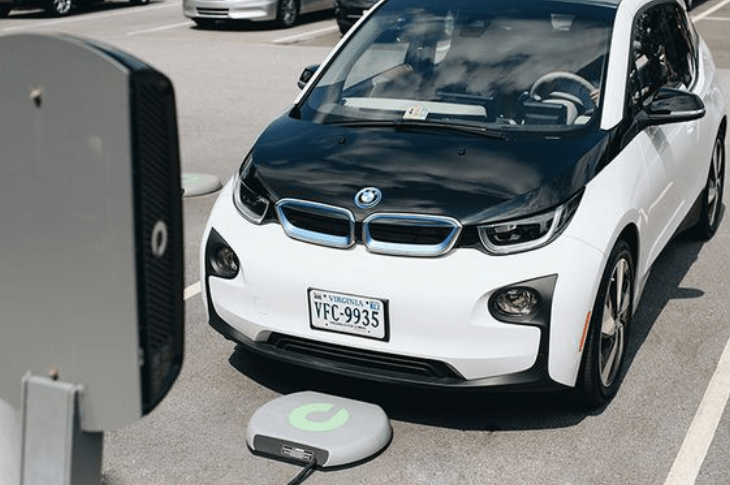In a world where convenience and efficiency are king, the advent of wireless EV charging is poised to transform urban infrastructure as we know it. Imagine a city where electric vehicles (EVs) seamlessly recharge their batteries while parked or even on the move, without ever needing to plug in. This isn’t a scene from a sci-fi movie but an emerging reality that’s gaining momentum. According to a recent report by Bloomberg Green, the wireless EV charging market is expected to grow at a compound annual growth rate of over 40% by 2030. In this article, we will explore how wireless EV charging is revolutionizing urban infrastructure, the technologies driving this change, and what it means for the future of sustainable mobility.
The Evolution of Wireless EV Charging Technology
Inductive Charging: The Heart of Wireless Innovation
Wireless EV charging primarily relies on inductive charging technology, which uses magnetic fields to transfer energy between two coils—one in the charger and the other in the vehicle. This technology is similar to the wireless charging pads you use for smartphones but scaled up for vehicles. Companies like WiTricity and Plugless are at the forefront of this innovation, developing systems that can charge vehicles with efficiencies comparable to traditional plug-in chargers.
- Efficiency and Convenience: Inductive charging systems can achieve over 90% efficiency, rivaling that of conventional plug-in methods.
- Safety: By eliminating exposed cables and connectors, wireless charging reduces the risk of electric shocks and trip hazards.
Dynamic Charging: Charging on the Move
Dynamic charging takes wireless technology a step further by allowing vehicles to charge while driving. This is achieved through specially equipped roads embedded with inductive charging coils. The city of Tel Aviv, in collaboration with ElectReon, recently announced a pilot program testing this technology on a 1.2-mile stretch of road.
- Benefits:
- Reduces the need for large, heavy batteries.
- Extends the range of EVs without frequent stops.
- Decreases reliance on charging stations.
Global Adoption and Pilot Programs
Countries around the globe are experimenting with wireless charging to better understand its potential. For instance, Sweden’s eRoadArlanda project and Germany’s inductive charging highway tests are paving the way for broader adoption.
The Impact on Urban Infrastructure
Reduced Need for Traditional Charging Stations
As wireless charging becomes more prevalent, the need for conventional charging stations may diminish. This shift could lead to:
- Less Congestion: Fewer cars queuing at charging stations.
- Urban Aesthetics: Reduced visual clutter from bulky charging equipment.
- Space Efficiency: More room for green spaces or pedestrian pathways.
Integration into Public Transportation
Wireless charging is not limited to personal vehicles. Public transport systems, such as buses and taxis, can benefit immensely:
- Increased Uptime: Buses can charge at stops, reducing downtime.
- Cost Savings: Lower infrastructure costs compared to installing large charging stations.
Enhancing Urban Mobility
Wireless EV charging can significantly enhance urban mobility by supporting the growth of shared mobility services. Companies like Volkswagen and Ford EV are exploring these possibilities, aiming to integrate wireless charging into their fleets for more efficient and user-friendly services.
How to Adapt to Wireless Charging
Tips for EV Owners
If you’re considering upgrading to a wireless charging-compatible EV, here are some tips to keep in mind:
- Check Compatibility: Ensure your vehicle is compatible with wireless charging systems. Brands like Hyundai and Nissan are already offering compatible models.
- Location Awareness: Keep an eye on cities implementing wireless charging infrastructure to take full advantage of the technology.
- Stay Informed: Follow industry news from sources like Electrek and InsideEVs to stay updated on the latest developments.
Where to Buy and What to Compare
When looking to purchase a wireless charging system or a compatible EV, consider the following:
- Brands and Models: Research wirelessly compatible models from reputable brands such as Tesla and Rivian.
- Charging Efficiency: Compare the efficiency ratings of different systems.
- Installation Costs: Factor in the cost of installing a home wireless charging pad, if available.
The Future of Urban Mobility
In conclusion, wireless EV charging is not just a technological novelty; it’s a game-changer for urban infrastructure and sustainable transport. As cities continue to grow and evolve, the integration of wireless charging into urban planning can lead to more efficient, cleaner, and smarter cities. The potential for dynamic charging on highways and urban roads could redefine how we perceive range anxiety and battery size.
Are you ready to embrace the future of urban mobility? As we look to a world where charging is as seamless as driving, the possibilities are endless. Keep an eye out for the latest developments, and consider how you can be a part of this exciting transformation.
In what ways do you think wireless EV charging will impact your daily commute? Share your thoughts in the comments below and join the conversation about the future of sustainable urban living.

